DANISH ARMED FORCES

|
|
|
|||
|
Ministry of
Defence |
|
|
Ministry of Defense logo, ancient (until 2005) The present logo of the Ministry of Defense
was announced on Wednesday 1 June 2005
Logoet er udarbejdet af
Kontrapunkt A/S, og det kan beskrives således: Forsvarsministeriets
nye logo består af et symbol - krone i krydsformation samt et navnetræk.
Logoet udtrykker præcision, styrke og hastighed og symboliserer et moderne
forsvarsministerium, der opererer i netværk både nationalt og internationalt.
Den gyldne krone er symbol for statsmagten, og krydset står som beskyttelse
af kronen. Det vagere kryds antyder ministeriets internationale orientering,
hvor samarbejdet sker i netværk - sammenhængen mellem krydsene, hvor
indsatsen er variabel afhængig af behov og situation, og hvor indsatsen også
sker uden for landets grænser. The logo is designed by Kontrapunkt A / S, and it
can be described as follows: The logo consists of the name of the service in
danish and english and two connected saltires, the upper left (sinister) one charged with a royal crown, the lower right (dexter) one of finer lines. The logo symbolizes the precision, strength and
speed of the defence ministry operating in a connected national and
international network. The crown symbolizes (danish) state authority. |
|
|
Armed Forces |
|
|
The joint
defense forces emblem consists of three parts: • The Danish crown • The original square version of Dannebrog • Three circular strokes, reminiscent of the
Danish Viking castles Trelleborg and Fyrkat, but can also symbolize the three
services. The
emblem symbolizes the defense's protective role for the nation, marked by the
national symbols in the form of the crown and flag - a protection that is at
the same time swift and solid, but also open to the outside world. Royal approval Her
Majesty the Queen approved the emblem on 5 February 2001, for use within the
Defense Chief's jurisdiction. Armed Forces Commander
Arms of
the Commander of the Danish Defense Force Approved by H.M. the Queen, 21-12-1977 Description of the Defense Chief Emblem: Arms: Or, nine hearts Gules, 3, 3 and 3 and three
lions passant Azure, crowned and unguled Or, langued Gules, per pale. Crown: The royal crown of Denmark Supporters: Two marshal’s batons in saltire, Sable,
capped Or. The
Defense Chief emblem is for carrying on uniforms made in two versions: In metal. In gold
embroidering on respectively medium green, dark blue or light blue surface. Approved
by H.M. Queen Margrethe II. 21.12.1977 |
|
|
Defense
Force Command |
|
|
Achievement of
Defense Staff The
Defense Staff coat of arms is used by: • Head of
Defense Staff, • the
head of the military staff's assistant, adjutant, secretary and driver, •
Management Secretariat, •
Development and Planning staff •
Operation staff. Emblem of the Defense Command The
purpose of the service badge is primarily to specify the personnel's place of
employment and to strengthen the personnel's sense of solidarity with the
Defense Command including the Defense Staff Description: Service
Place Badge - consists of the crowned
state arms placed on an sword per pale with Frederik IX's crowned cypher on
the button, surrounded by a blue ribbon inscribed VIRIBUS UNITIS (by united forces). The
Defense Command's badge for wearing on uniform is made in two versions: |
|
|
|
|
|
ancient
type |
new type |
|
Intelligence
Service |
|
|
The Danish
Defence Intelligence Service (DDIS) (Forsvarets
Efterretningstjeneste, short FE (often but
incorrectly: FET)), is the Danish intelligence agency,
responsible for Denmark’s foreign intelligence, as well as being
the Danish military intelligence service. DDIS is a department
under the Ministry of Defence and works under the responsibility of
the Defence Minister of Denmark. It is housed
at Kastellet in Copenhagen. The DDIS
gathers, analyses, and disseminates information concerning conditions of
importance to Denmark’s security, and to the security of Danish military
units deployed on international missions. Intelligence activities include
collection of information of political, financial, scientific and military
interest. DDIS
works closely with the Danish Security Intelligence Service, which is the intelligence arm of the Danish
police, and the signals intelligence unit of the Danish
signal regiment. |
|
|
Military Police |
|
|
The Armed
Forces Military Police Center is a Defense Armed Forces military police
unit under the Training Regiment. The
center was established on 1 January 2015 by merging the various military
police units of the Army, Navy and Air Force into a single unit located at
Aalborg Barracks, organizationally subject to the Training Regiment.
Military Police |
|
|
Army |
|
|
Royal Danish Army ARMY Command Emblem 4.1 Royal approval. The Army Command emblem is approved by Her Majesty the Queen on 12 December 2018. Page 4 of 6 Case No .: 2018/031890 Doc No .: 1954062 FKOBST L.202-0 2019-03 4.2
Army Command 12.12.2018 Emblem: A sabre
and a carabine in saltire charged with a cannon per pale, ensigned
with Christian VII royal cypher, Sable and Or Crown: The danish royal crown Garland: Two laurel branches Argent, each with eight
berries, Gules Use. The badge is used by personnel serving in
the Army Command. History. The Army Command's badge is one of the
Army's original departmental emblems and adopted on 1 January 1951, on the
143rd anniversary of the establishment of the General Staff. It has
originally been in continuous use at the level since 1951, and from October
2014 to December 2018 it was the Army Staff's emblem. The emblem consists of
the symbols of the three original parts of the army: Infantry, Cavalry and Artillery, which from
1904 were used in the General Staff's emblem where the sable was originally
turned downwards. The crown was applied in 1911. Christian VII.'s royal
cypher refers to the establishment of the General Staff on 20 January 1808
Emblem: Gules, surrounded by a ring Sable rimmed Or,
inscribed CHIEF OF ARMY STAFF ìì also Or, the emblem of the Army
Command. The two six-pointed
stars are the insignia of rank of a Generalmajor. |
|
|
Danish
Army Units |
|
|
|
|
|
Army
Intelligence Centre |
|
|
0
Army Intelligence Centre Emblem [1] Emblem: A rose
Gules buttoned Argent charged with
the royal cypher of Queen Margarete. Crown: The
Royal Danish crown Supporters: A key
and a thunderbolt insaltire |
|
|
The
Royal Life Guards / Den Kongelige Livgarde |
|
|
A
mechanized infantry regiment of the Danish Army, founded in 1658 by King
Frederik III. The primary task is to provide a number of soldiers from
the Guard Company to serve as a guard/ceremonial unit to the Danish
monarchy,
Coat of arms Arms: Per
pale, Argent and Azure, the badge of the service counterchanged.
Drawing: Skjoldbro Royal Life Guards badge Badge: A 48-
rayed six-pointed star, charged with the royal cypher of Frederick III
crowned with the royal danish crown. In chief the motto PRO REGE ET GREGE (For
the King and the People) on a golden ribbon. Army Military
Police
Arms of the Army Military Police Arms: Azure,
two pistols in saltire the danish royal crown in chief all proper. The service merged with the other military police
services on 1 Januray 2015 and is located |
|
|
TFR Copenhagen Lokalforsvarsregion
Sjælland & Lolland Falster
Lokalforsvarsregion Fyn,
Syd- & Sønderjylland
Lokalforsvarsregion Nord-
& Midjylland
Lokalforsvarsregion
Bornholms Værn
Insignia of the Royal Danish Army 1956 (Frederick IX
(1947-’72)
Badges and Insignia of the Royal Danish Army 2000 See also
Wikipedia: Militære
Grader i Danmark
Helmet emblem
Army officer cap badge
Army warrant officer cap badge
Bomber pilot badge (1956) |
|
|
Navy |
|
|
The history of the Danish navy goes back to
the middle ages when norse, danish and swedish drakkar ships ravaged the european shores. The naval power of
Denmark was organized by the founding of a joint Dano-Norwegian navy on 10
August 1510, when King John appointed his vassal Henrich
Krummedige to
become “chief captain and head of all our captains, men and servants whom we
now have appointed and ordered to be at sea”
Coat of arms of Henrich Krummedige (*1464-†1530) First chief captain de the
Danish Navy Arms: Azure, a lime-tree Argent Crest: A pair of rams’ horns Argent.
Medal at the occasion of 500 years Danish Navy The emblem shows an anchor
per pale charged with the three lions of Denmark supported by two Dannebrog flags. The motto means: With
the fleet for Denmark The joint
fleet was dissolved when Christian Fredrick established separate fleets for
Denmark and Norway on 12 April 1814. These are the modern ancestors of
today's Royal Danish Navy and Royal Norwegian Navy. The Admiralty College (sometimes
informally referred to as the Admiralty) was established in 1655 five years
before the introduction of the monarchy into Denmark as the authority
responsible for the affairs of the navy. An attempt to establish a similar
authority failed in 1579. The
Admiralty College also served as a court (supremacy of the Admiralty) for the
navy whereas economic affairs were first of all the competence of the College of War (1658-1848). From 1699 the Admiralty
College consisted of all flag officers, two commanders, and two officers.
Until 1712, the war-governing authority was common to land and naval forces.
A Commissariat College for the Navy was then established and in 1725 a
separate Search War Chancellor was created. In 1746, the Admiralty College
and the Commissariat College were merged into one college to be later
subdivided again. The
Admiralty College was replaced in 1848 by the Ministry of the Navy, which in
1950 joined the Ministry of Defense
1746-1848 The head
of the Navy seal. The shield is identical with the combined Admiralty and
Board of Commissaries seal in the 18th and 19th centuries. During the periods
when the two colleges were separated, it was replaced by the lions of the
Admiralty seal and the sailing ship of the Board of Commissaries
Minister of the Navy
Anchor, symbol of the Navy, old (1956) and new style
(1965) .
Chief Commander of the Navy badge
Commander of
the Navy Arms Arms: Azure, the naval badge with the anchor's
shank charged with three crowned lions passant, Or. Motivation
The anchor with the three lions was originally used as an emblem of the
Admiralty. Later, it is found with another emblem showing a warship on the
Navy Ministry seal. The head of the Navy's emblem is prepared by the Navy's
Heraldic Working Group at the request of the Naval Command. Approved by the
Department of Defense on 14 October 1964
Navy Operational Command Arms: Gules, two cannon in saltire betwee three
cannon-balls 2 and 1 Or. Crown: The Danish Royal crown Supporter: An
anchor Or Explanation The Naval
Operative Command has the operational command of the navy's vessels as well in
war as in peace. As coat of arms for this command is selected third field in
the Thunderbolt assigned weapons, the contents of this field being assumed to
express "Det Danske Ransom ", three gunshots. The red field may
refer to the red flags raised as signal for battle. Prepared
by the Naval Heraldic Working Group at the behest of the Chief The Navy
and approved by H.M. The Queen on May 18, 1972. Coats of arms of the danish
navy units and ships Heraldry
in the Navy established 1959-60 Cooperation was now initiated between the War
yard by architect N.E. Botfeldt and the adjutant at the Chief of the Navy,
who in one for years became the focal point for the navy's work on heraldry.
The Bronze Foundry The Brothers Grage was assigned the task of cast the weapons,
and the artistic design was placed in the hands of the sculptor Sv. Lindhart,
like the painting work was delegated to the firm Kgl. court decoration
painter R. Rasmussen and Son. Thus, by the New Year 1958-59 there was 15
weapons for approval. The first received royal approval on April 15 1959,
which is thus the date of introduction of the official war herald in Denmark.
These were the ships "Dannebrog", "Holger Danske",
»Huitfeldt,» Niels Ebbesen «,» Willemoes "And" Eggs ". The
30th of September the same year followed the approbation of the guns to
"Bellona", "Diana", "Flora", "Rolf
Krake" and 6 submarines. A great deal of work had been done by heraldic
expert from the Danish Heraldic Society of 1946, just at this time was part
of a larger one Heraldic Society, Societas Heraldica The four
basic shields in Danish naval heraldry. |
|
|
|
|
|
shield 1
with pointed foot is seen there used by all naval units and operational
authorities |
Shield 2, the
oval shield, used by land establishments, e.g. naval stations. |
|
|
|
|
Shield 3, shield with rounded foot, used by
non-operational naval authorities, e.g. schools. |
Shield 4, corresponds to shield 1 simply with an oval ring
around which the Marine Home Guard is stated is used by Marine Home Guard
authorities and flotillas. |
|
|
|
|
Examples
of gift shields. They are placed either on a red or a blue background depending
on which color is dominant in the coat of arms in question. Naval Miitary Police
Arms: Azure, two pistols in saltire Or.: Crown: A royal Danish crown Supporter: An anchor per pale Or. Meaning: The
pistols point to the Military Police armament. The
crossed gold guns have previously been used as a mark for military police and
gendarmerie corps. Designed
by The Navy's Heraldic Working Group at the request of the Chief of the
Navy's Operational Command and approved by H.M. Queen Margrethe II. : The
military police in the navy were organizationally subordinated to the Naval
Guard Corps on 6 May 2008. It came under the Training Regiment on 1 January 2015. Æ An armorial of the
Danish Navy on the pages 45-272 of Heraldik
i Søværnet
Cap badge, officers
Navy Petty officers |
|
|
Air Force |
|
|
Achievement for the Air Force through the ages Arms: The arms of Denmark Crown: The Royal crown of Denmark Supporter: A pair of wings Or.
Flyvertaktisk Kommando Arms: Or, a disk Gules charged with a smaller disk
Argent, and a chief nebuly Gules. Crest: A pair of wings Or. Crown: The Danish royal crown Motto: FTK EX AETHERE FIRMITAS (F[yver] T[aktisk] K[ommando] Strength,
Firmness and Endurance in the air) in golden lettering on a ribbon Azure. Motivation: As the
main character, the circular national roundel is selected to mark that the
Flying Tactical Command controls the air force's operational weapon systems.
The cloud section is selected to indicate that the shield symbolizes the
airspace. Arms: The arms of Denmark Crest: Pair of wings Or Crown: The royal danish crown Motto: ìì
CHEFFEN FOR FLYVERTAKTISK KOMMANDO For the
commander of the Air Tactical Command, a composition is chosen corresponding
to the symbolic expression of the Air Force. The mark has previously been
awarded to the Chief of the Air Force and the Inspector of the Air Force
Roundel Æ An armorial of the Danish Air Force on http://www.flvskjolde.dk/ . |
|
|
Cap badge officers |
|
|
The Home Guard |
|
|
Badge of the Home Guard until 2018 Common crown and new logo From the
turn of the year 2108, the Home Guard - together with the other boards of the
Ministry of Defense - will receive a new visual identity, which to a greater
extent reflects the correlation between the eight different governmental
authorities.
Badge of the Home Guard adopted 01.01.2018 The home
guard's new logo in dark red color will consist of the capitals HJV crowned with a common crown
and surrounded by two semi-circular strokes.
Hjemmeværns
Kommandoen Home Guard Command Border Guard and Regional Home Guard badges
and logos 2. The
Home Guard Command's Badge and Border Guard Badges The Home
Guard Command and Border Guard badges must always appear together with the HJV emblem / logo. The Home
Guard Command badge and the Border Guard badges can also be used as logos
where the badges are right-aligned and the name is set with the font Thunder
Shield in two lines top line in Bold and bottom line in Light. 3. The
emblems of the Home Guard regions The
emblems must always appear
together with the HJV emblem / logo. The
region's badges can also be used as logos where the badges are right-angled
and the name is set with the font Thordenskjold in two lines top line in Bold
and bottom line in Light. |
|
|
Home
Guard Army |
|
|
|
|
|
Regional Districts |
|
|
|
|
|
Regional District East |
Regional District West |
|
Home Guard Army Districts |
|
|
Army Home Guard District Copenhagen |
Army Home Guard District North Jutland (Aalborg) |
|
Bornholm's Home Guard |
Army Home Guard District Middle and West Jutland (Skive) |
|
Army Home Guard District North Zeeland |
Army Home Guard District East Jutland (Aarhus) 01.01.2011 [2] |
|
Army Home Guard District Copenhagen's Western Area |
Army Home Guard District South-East Jutland |
|
Army Home Guard District South Zeeland and
Lolland-Falster |
Army Home Guard District South Jutland and Schleswig
(Søgaard [da]) |
|
Army Home Guard District Middle and West Zeeland |
Army Home Guard District Funen (Odense) |
|
Special Support and Reconnaissance Company |
|
|
Homeguard
Navy / Marinehjemmevaernet |
|
|
All Naval
Home Guard coats of arms rest on an anchor over which one royal crown
surrounded by a navy blue gold edged ribbon in gold inscxribed Marine Home Guard.
Coast Guard blazon Arms: Or, a drakkar
with hoisted sail, in chief two barrels Sable with flames Gules. Crown: The royal danish crown Supporter: An anchor Or Motto: On a ribbon Azure rimmed Or: MARINE HJEMME
VÆRNET in golden lettering. Motivation The
burning barrels are chosen because the alert of the gunmen knew that attacks
on the homeland in ancient times, among other things, happened by ignition of
pods. In
connection with this, the drakkar has been selected to mark the Marine Home
Guard association with the defense of old times. The shield is also used for
Marine Home Defense District 1 and 2. Prepared
by the Naval Heraldic Working Group at the request of Home Guard and Approved
by H. M. King on February 1, 1967. Æ An armorial of the
Danish Home Guard Navy on the pages 274-293 of Heraldik
i Søværnet |
|
|
Home Guard Air
Force / Flyverhjemmevaernet |
|
|
|
|

© Hubert de Vries 2019-10-25

 .
. 


































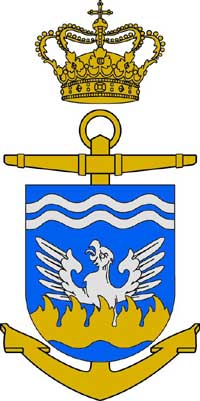
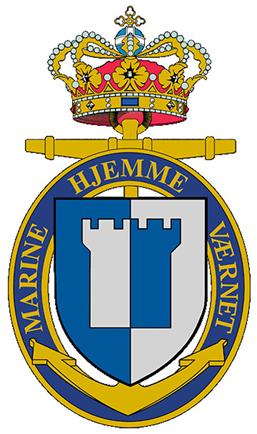
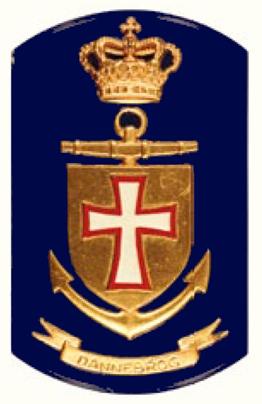

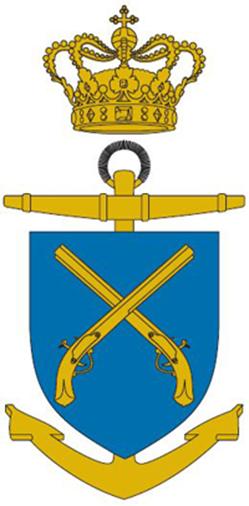
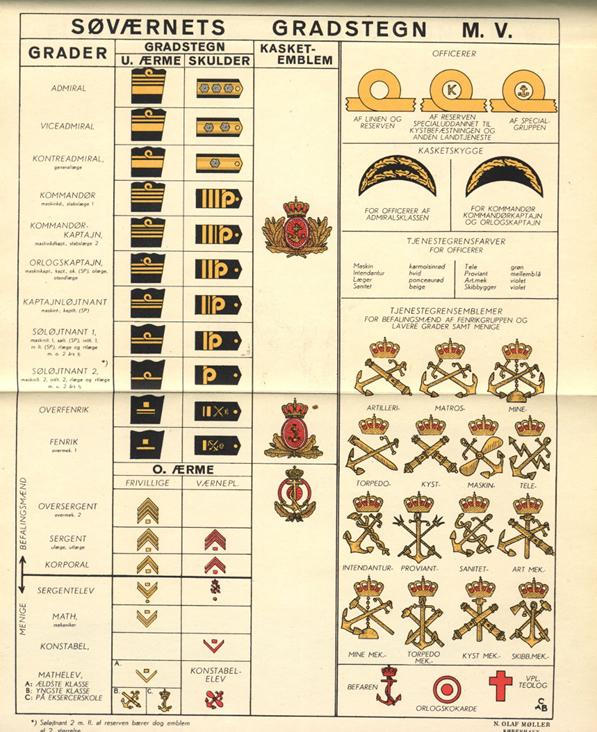
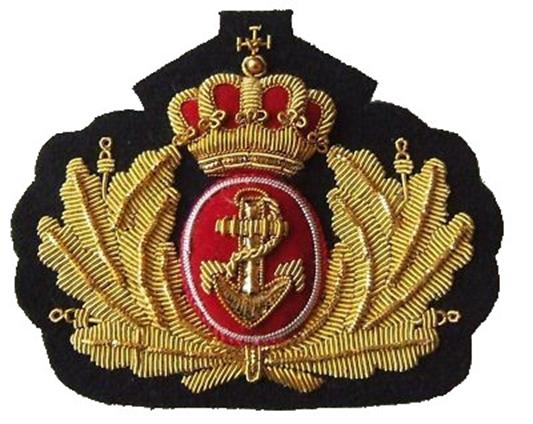
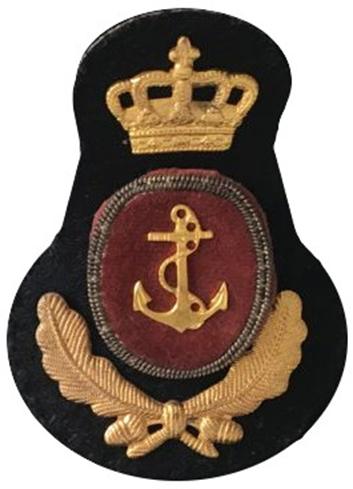
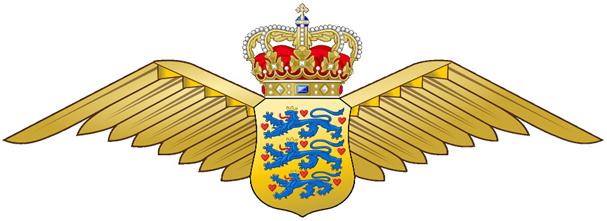
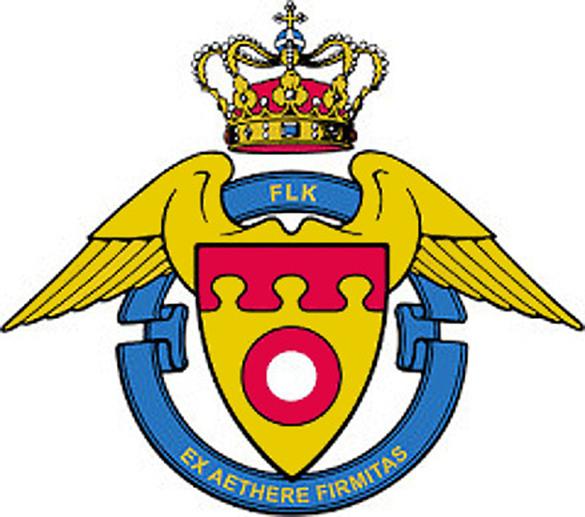
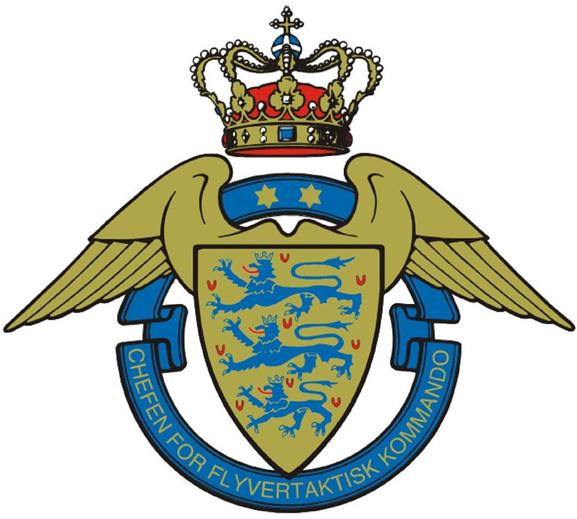
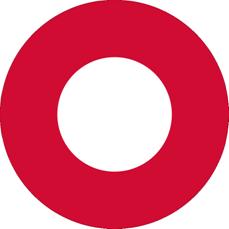
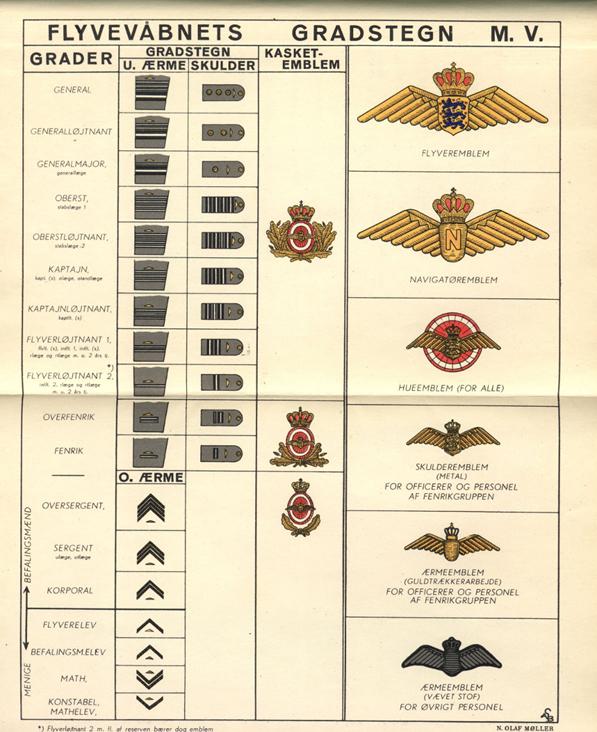
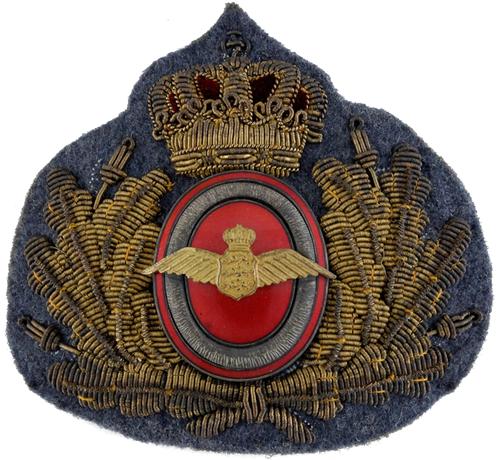
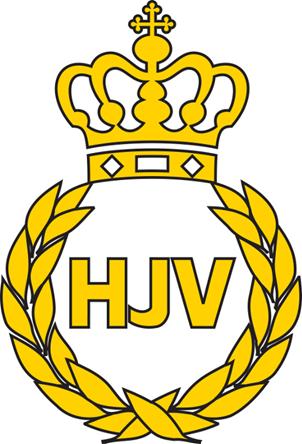
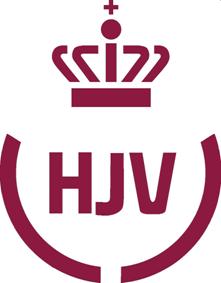
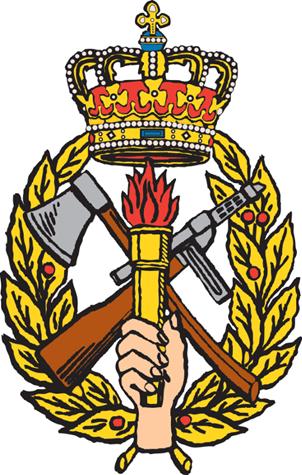
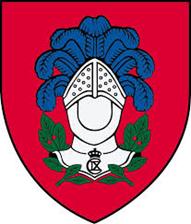
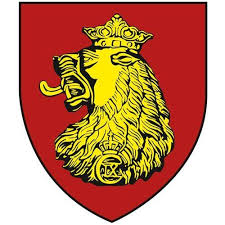
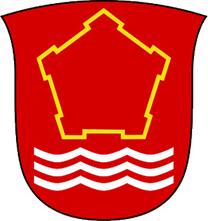
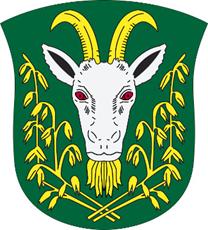
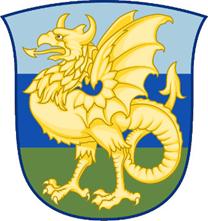
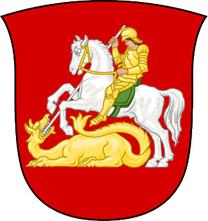
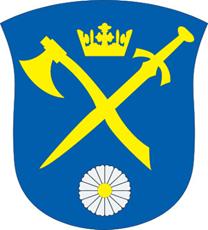
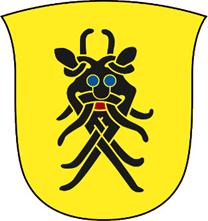
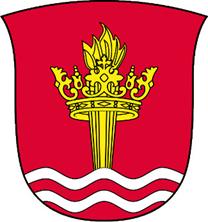
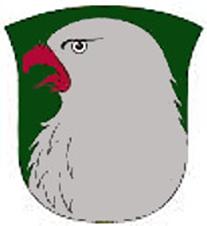
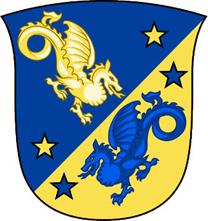
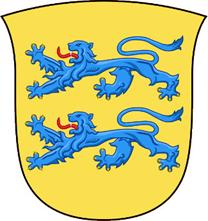
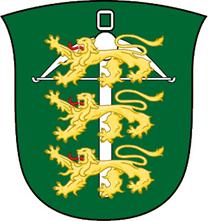
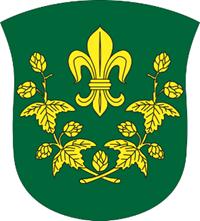
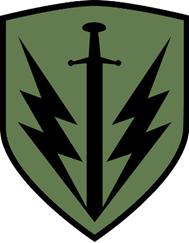
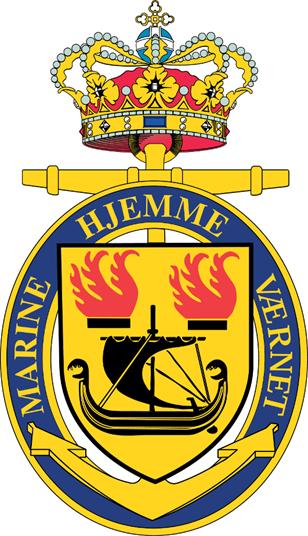
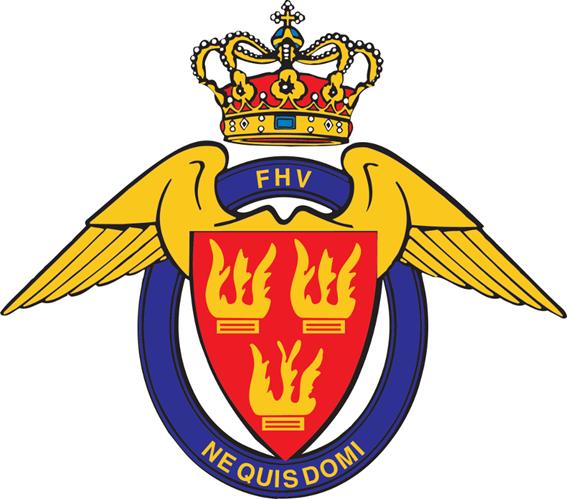
 Heraldry of the World
Heraldry of the World